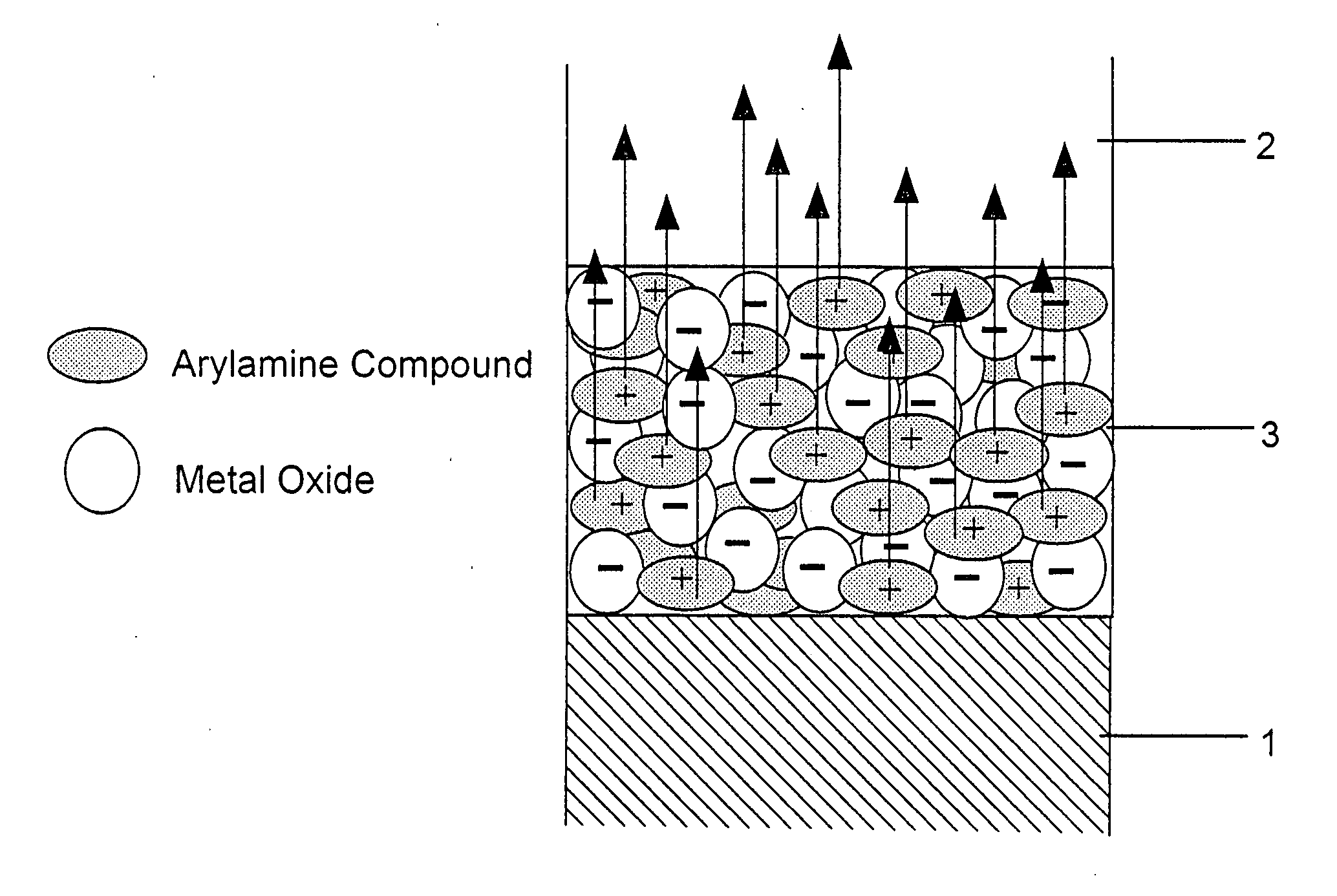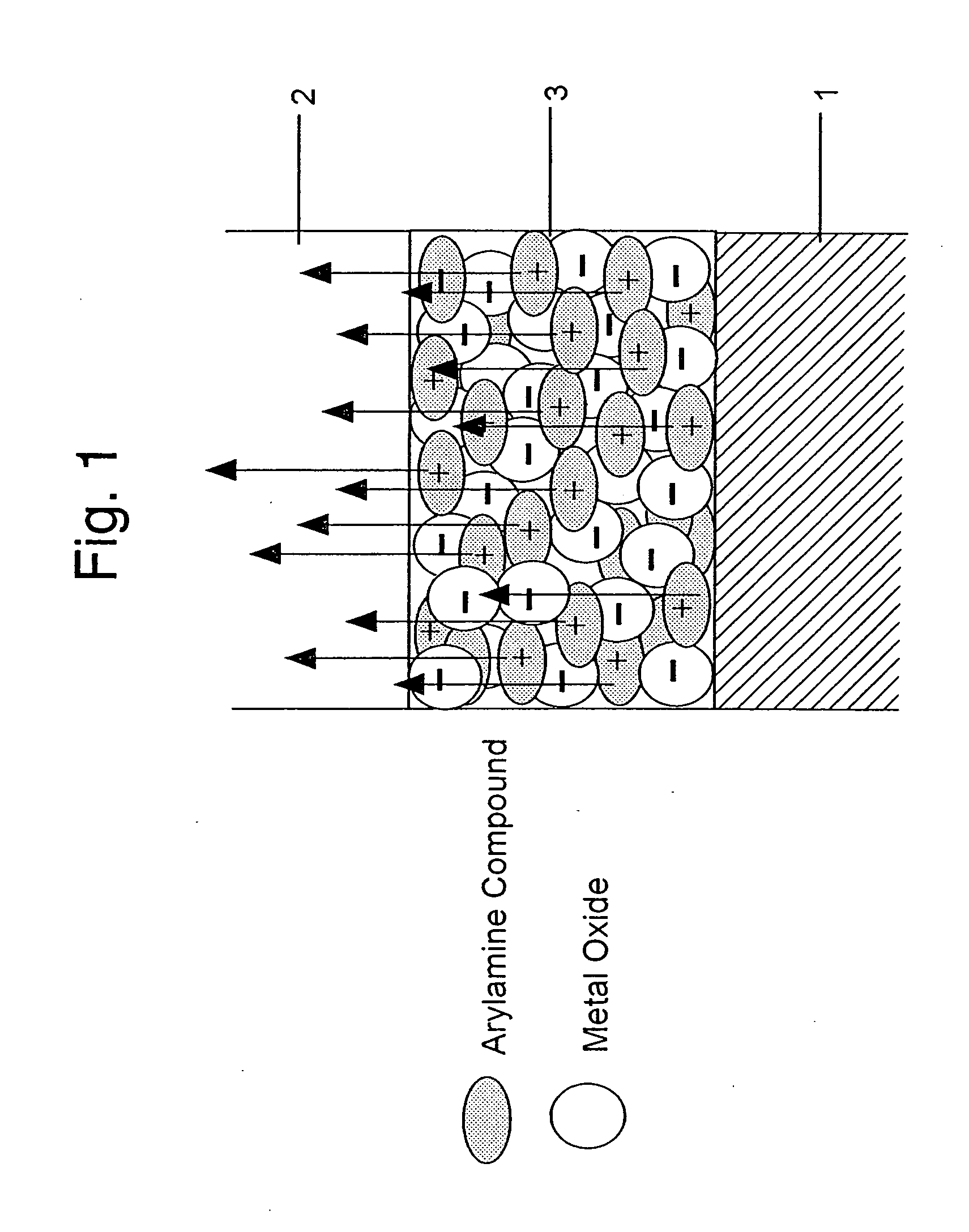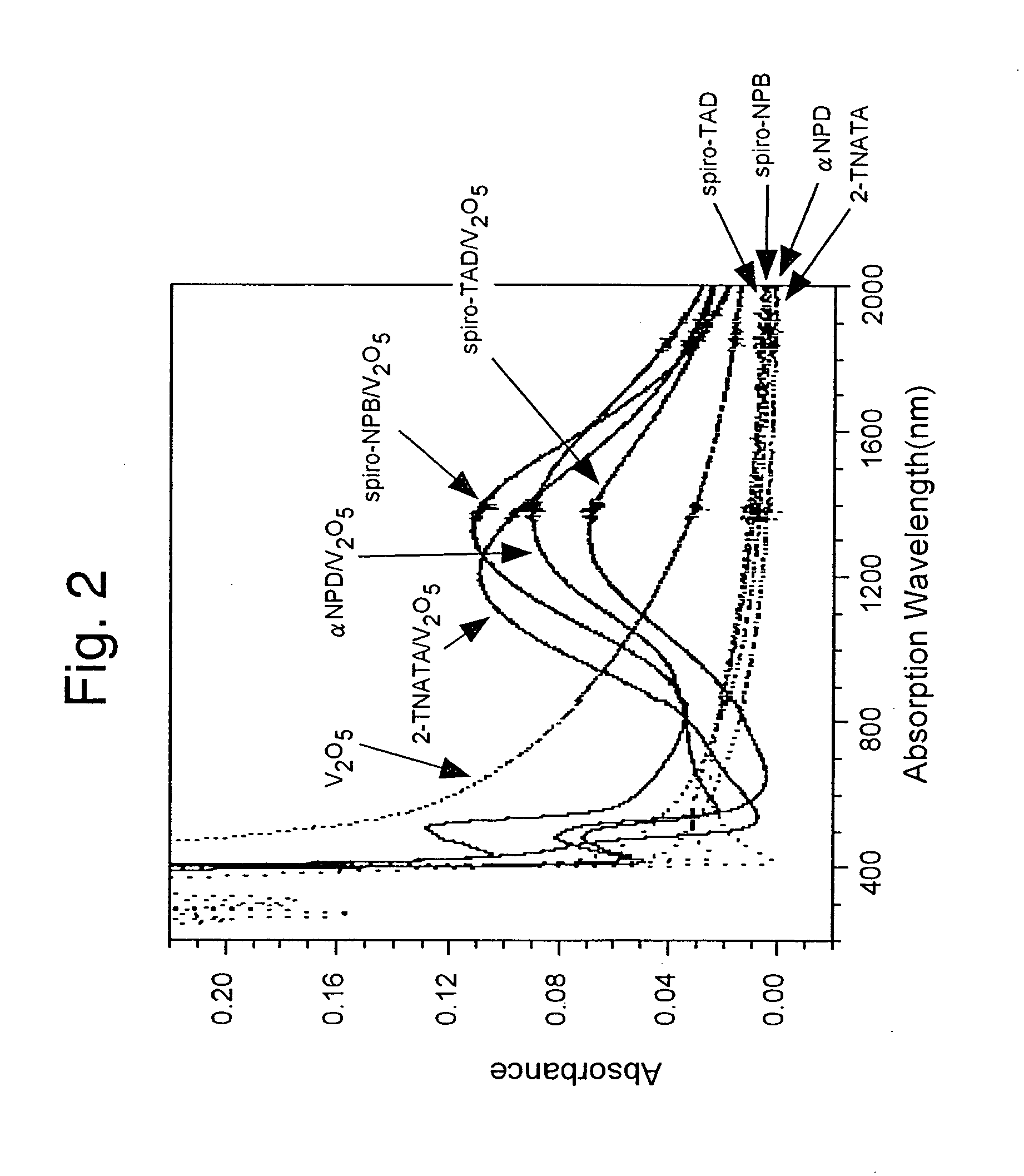Organic electroluminescent device
- Summary
- Abstract
- Description
- Claims
- Application Information
AI Technical Summary
Benefits of technology
Problems solved by technology
Method used
Image
Examples
example 1
[0087] In this example, the organic EL device having the lamination structure of FIG. 5 is fabricated.
[0088] A glass substrate 21 is coated thereon with an ITO (indium-tin oxide; Nippon Sheet Glass Co., Ltd.) having a sheet resistance of about 10 Ω / □ as a transparent anode electrode layer (anode electrode layer) 22. A metal oxide, V2O5, and an organic compound having a hole transporting property, α-NPD, are co-deposited at a molar ratio of V2O5: α-NPD of about 4:1 on the ITO-coated glass substrate 21 to form a mixed layer 27 having a thickness of about 100 Å acting as a hole injection layer.
[0089] Thereafter, a hole transportation layer (α-NPD) 23, a light-emissive layer (Alq) 24, an electron injection layer (metal doping layer, low resistance electron transportation layer) 25 and a cathode electrode layer (cathode) 26 are sequentially laminated as in the production of the EL device of the above-described Reference Example. Note that an organic structure 28 including a light-emiss...
example 2
[0091] In this example, the organic EL device having the lamination structure of FIG. 6 is fabricated.
[0092] A glass substrate 31 is coated thereon with an ITO (indium-tin oxide; Nippon Sheet Glass Co., Ltd.) having a sheet resistance of about 10 Ω / □ as a transparent anode electrode layer 32. A metal oxide, V2O5, and an organic compound having a hole transporting property, α-NPD, are co-deposited at a molar ratio of about 4:1 on the ITO-coated glass substrate 31 to form a mixed layer 37 having a thickness of about 1,000 Å acting as a hole injection layer of the present invention.
[0093] Thereafter, a hole transportation layer (α-NPD) 33, a light-emissive layer (Alq) 34, an electron injection layer (metal doping layer) 35 and a cathode electrode layer 36 are sequentially laminated as in the fabrication of the EL device of the above-described Reference Example. Note that an organic structure 38 including a light-emissive layer is formed from the hole transportation layer 33, the ligh...
example 3
[0099] In this example, the organic EL device having the top emission structure of FIG. 12 is fabricated. An aluminum (Al; work function of about 4.2 eV) is deposited at the deposition rate of about 10 Å / sec under the pressure of about 10−6 Torr (1 Torr=133.32 Pa) (hereinafter, all deposition process is conducted under the same condition) on a glass substrate 41 to form an anode electrode layer 42 having a thickness of about 1,000 Å. A metal oxide, V2O5, and an organic compound having a hole transporting property, α-NPD, are co-deposited at a molar ratio of about 4:1 on an anode electrode layer 42 to form a mixed layer 47 having a thickness of about 100 Å acting as a hole injection layer of the present invention. Thereafter, α-NPD is deposited at the deposition rate of about 2 Å / sec on the hole injection layer 47 to form a hole transporting layer 43 having a thickness of about 600 Å. Subsequently, Alq is deposited on the hole transportation layer 43 under the same vapor deposition c...
PUM
| Property | Measurement | Unit |
|---|---|---|
| Glass transition temperature | aaaaa | aaaaa |
| Electrical resistivity | aaaaa | aaaaa |
| Electrical resistivity | aaaaa | aaaaa |
Abstract
Description
Claims
Application Information
 Login to View More
Login to View More - R&D
- Intellectual Property
- Life Sciences
- Materials
- Tech Scout
- Unparalleled Data Quality
- Higher Quality Content
- 60% Fewer Hallucinations
Browse by: Latest US Patents, China's latest patents, Technical Efficacy Thesaurus, Application Domain, Technology Topic, Popular Technical Reports.
© 2025 PatSnap. All rights reserved.Legal|Privacy policy|Modern Slavery Act Transparency Statement|Sitemap|About US| Contact US: help@patsnap.com



